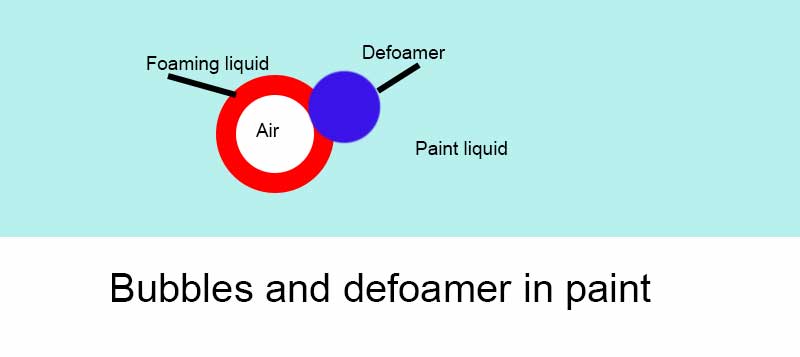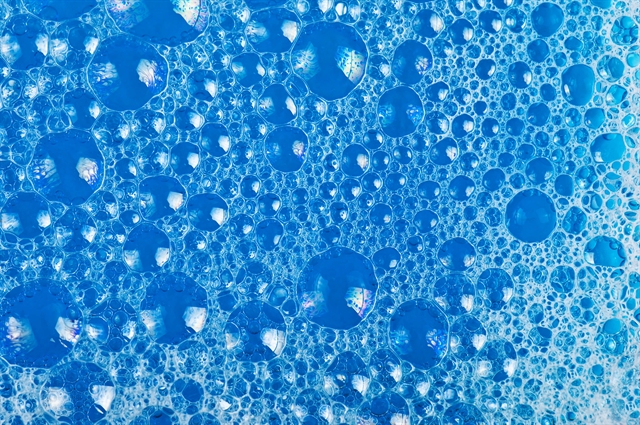The Function of Defoamers in Enhancing Product Top Quality and Efficiency
In numerous manufacturing procedures, the presence of foam can considerably impede product top quality and operational effectiveness. Defoamers work as crucial additives that reduce this problem, ensuring smoother manufacturing process while boosting the aesthetic and practical characteristics of the end products (defoamers). Their application covers a wide variety of markets, from food and drink to drugs, where consistency and reliability are paramount. The choice of the proper defoamer can be important to achieving optimal results, increasing important questions about formula compatibility and efficiency metrics that warrant additional expedition.
Recognizing Defoamers
Understanding the function of defoamers is important for preserving product quality across different industries. Defoamers are chemical additives created to prevent the formation and reduce of foam in fluid systems, which can negatively affect procedures such as mixing, filling up, and surface area tension. Lathering can cause inadequacies, item issues, and jeopardized visual allure, making defoamers a crucial component in manufacturing operations.
In industrial applications, defoamers aid to enhance product uniformity and stability. The effective usage of defoamers not only guarantees smoother production procedures yet also adds to superior item efficiency.
Moreover, the option and solution of a defoamer should straighten with certain application requirements, such as compatibility with other ingredients, efficiency under varying temperature and pH conditions, and prospective regulative restrictions. Eventually, understanding defoamers' functions and their significance in numerous formulas is important for enhancing manufacturing and ensuring the best final result.
Sorts Of Defoamers
Defoamers can be classified right into numerous types based on their structure and system of action. The main types consist of silicone-based, non-silicone organic, and not natural defoamers.
Silicone-based defoamers are among the most effective, mostly due to their capability to spread out promptly on the liquid surface and interfere with foam development. Their one-of-a-kind chemical structure permits superior security, making them suitable for high-temperature applications and settings with varying pH degrees.
Non-silicone organic defoamers, commonly composed of fatty acids or all-natural oils, are valued for their biodegradability and lower poisoning. These are typically made use of in food and drink applications where security and ecological impact are critical.
Not natural defoamers, that include materials like talc or calcium carbonate, act by enhancing the density of the liquid, consequently reducing foam stability. They are often utilized in commercial procedures where compatibility with other products is not a concern.
Each sort of defoamer has distinct advantages and limitations, permitting customized solutions relying on the specific frothing problems experienced in various applications. Understanding these distinctions is important for enhancing performance and achieving desired product quality.
Applications Across Industries
Numerous sectors take advantage of defoamers to enhance item top quality and functional performance. In the food and beverage market, defoamers are crucial in processes such as developing and milk manufacturing to avoid foam formation, which can lead to inefficiencies and product variance. By managing foam, manufacturers can guarantee much better return and an extra consistent item.
In the pharmaceutical sector, defoamers play a crucial function in the solution of liquid drugs, where too much foam can restrain blending and accurate application. Their usage helps preserve the integrity of the formulations and assists in smoother manufacturing procedures.
The paint and finishings market additionally relies upon defoamers to enhance the efficiency of items throughout application. By reducing foam, these additives make certain a smoother finish and boost the aesthetic high qualities of the final item.

Benefits of Using Defoamers
While the application of defoamers differs throughout industries, their benefits continually boost item top quality and process effectiveness. One substantial advantage is the reduction of foam formation during producing procedures, which can otherwise lead to manufacturing hold-ups and variances in More Help item top quality. By minimizing foam, defoamers allow a smoother flow of products, helping with a lot more efficient operations and lowering the probability of tools malfunctions.
In addition, the use of defoamers can boost the appearance and structure of last products. In industries such as layers, paints, and food processing, excessive foam can endanger the aesthetic looks and total high quality, while the appropriate defoamer application ensures a consistent surface and preferable characteristics. Defoamers can contribute to cost financial savings by lowering waste throughout production and enhancing the usage of raw materials.

Picking the Right Defoamer
Choosing the appropriate defoamer is essential for enhancing manufacturing processes and making certain item quality. The option of defoamer influences not just the performance of foam control yet additionally the total efficiency characteristics of the last like it item. Elements to think about consist of the kind of application, the chemistry of the formula, and the ecological problems under which the item will be made use of.
Different markets might require particular defoamer types, such as silicone-based, natural, or polymeric defoamers. Comprehending the compatibility of the defoamer with the main active ingredients is important to stay clear of damaging reactions that can endanger product integrity. Furthermore, the defoamer's effectiveness in different temperatures and pH levels must be examined to make sure consistent performance.
Examining the defoamer in small applications can give beneficial understandings right into its efficiency and viability. Consideration of regulative compliance, specifically in food, drugs, and cosmetics, is extremely important in selecting a defoamer. Eventually, a thorough evaluation of these factors will lead to the choice of a defoamer that not only manages foam effectively but likewise enhances the quality and efficiency of the end product.
Conclusion

In final thought, defoamers are crucial ingredients that significantly enhance item quality and efficiency throughout different industries. The calculated option and application of defoamers lead to cost financial savings, optimized source use, and boosted customer contentment.
Foaming can lead to inefficiencies, product flaws, and endangered visual allure, making defoamers a critical element in producing operations.
